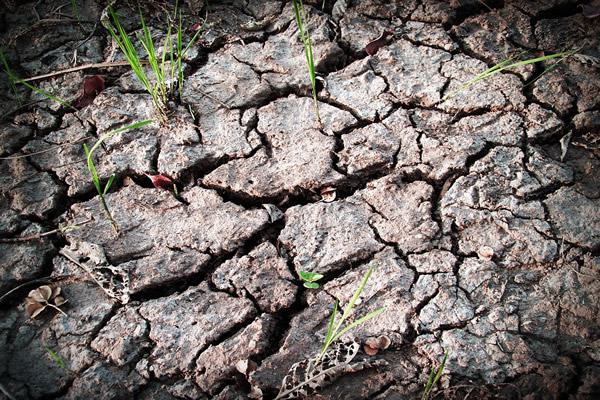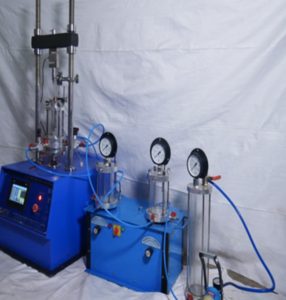How Do Soil Contamination Tests Drive Environmental Remediation?
Contaminated soil is more than just a localized problem—it’s a threat to entire ecosystems, public health, and long-term land usability1. Whether caused by industrial spills, pesticide overuse, or heavy metal accumulation, the road to environmental recovery begins with accurate soil testing2. These tests don’t just identify what’s wrong—they shape remediation strategies3, guide regulations, and track recovery progress. Let’s explore how soil contamination testing powers every stage of the remediation process.
Advanced Techniques for Detecting Soil Contaminants
Modern soil contamination tests go far beyond basic pH and nutrient analysis. Today’s laboratories use highly sensitive, targeted methods4 to detect both inorganic and organic pollutants—even at trace levels.
Key Testing Technologies:
-
Gas Chromatography-Mass Spectrometry (GC-MS)5
Detects organic pollutants like petroleum hydrocarbons, pesticides, PCBs. -
Inductively Coupled Plasma Mass Spectrometry (ICP-MS)6
Measures heavy metals such as lead, cadmium, arsenic, mercury. -
X-Ray Fluorescence (XRF)
Provides rapid, in-field detection of metals and elements. -
Fourier Transform Infrared Spectroscopy (FTIR)
Identifies chemical bonds in plastics, solvents, and organic residues. -
Microbial Biomarker Analysis
Monitors changes in soil microbiome as an indicator of contamination.
Comparison of Testing Methods
| Method | Target Contaminants | Sensitivity | Field/Lab |
|---|---|---|---|
| GC-MS | VOCs, PAHs, pesticides | Very High | Lab |
| ICP-MS | Heavy metals | Ultra-sensitive | Lab |
| XRF | Metals and elements | Moderate | Field & Lab |
| FTIR | Organics, microplastics | High | Lab |
These methods form the diagnostic backbone of any soil remediation effort.

Assessing the Impact of Contaminated Soil on Ecosystems
Once contaminants are identified, the next step is understanding how they affect the broader environment. Contaminated soils can:
- Leach toxins into groundwater
- Disrupt plant and microbial life
- Bioaccumulate in food chains
- Alter soil structure and fertility
Example: Effects of Common Soil Contaminants
| Contaminant | Source | Ecological Impact |
|---|---|---|
| Lead (Pb) | Industrial sites, paints | Neurotoxicity in wildlife, root inhibition |
| Arsenic (As) | Mining, pesticides | Carcinogenic, toxic to aquatic organisms |
| Petroleum Hydrocarbons | Fuel spills | Soil oxygen depletion, plant toxicity |
| Atrazine | Agricultural runoff | Hormonal disruption in amphibians |
By linking soil test data with risk assessments, scientists can prioritize which contaminants need immediate action and which areas are most at risk.

Using Test Results to Design Effective Remediation Plans
Soil contamination tests inform the type, scale, and method of cleanup7. A remediation plan typically includes:
- Pollutant Identification8: What is present, and in what concentration?
- Extent Mapping: How deep and wide has the contamination spread?
- Risk Analysis: What’s the threat to humans and the environment?
- Remediation Method Selection9: Based on contaminant type and site constraints.
Remediation Methods Guided by Test Data
| Remediation Strategy | Best For | Example |
|---|---|---|
| Excavation & Disposal | Localized heavy metal hotspots | Contaminated schoolyards or playgrounds |
| Bioremediation | Organic pollutants | Oil-contaminated agricultural fields |
| Phytoremediation | Heavy metals in shallow soils | Lead removal using hyperaccumulator plants |
| Soil Washing | Mixed pollutants | Industrial brownfield sites |
| Immobilization (Stabilization) | Arsenic or mercury | Adding lime or phosphates to reduce mobility |
The chosen strategy is customized using test data, ensuring cost-effectiveness, compliance, and environmental safety.

Monitoring Environmental Recovery Based on Soil Test Data
Even after cleanup, testing continues. Post-remediation monitoring ensures that contaminant levels are reduced and ecosystems are recovering.
Monitoring Goals:
- Confirm residual levels are within regulatory limits
- Track microbial and plant recovery
- Prevent recontamination from adjacent sites
Post-Remediation Monitoring Example
| Parameter | Pre-Remediation | Post-Remediation | Target Threshold |
|---|---|---|---|
| Lead (Pb) | 540 mg/kg | 80 mg/kg | < 100 mg/kg |
| Soil pH | 5.1 | 6.6 | 6.0–7.5 |
| Total Petroleum Hydrocarbons (TPH) | 1200 mg/kg | 150 mg/kg | < 200 mg/kg |
| Microbial Biomass | Low | Recovered | Normal range |
By continuing soil testing throughout the recovery phase, scientists and regulators can verify long-term success and sustainably restore land for safe use.

Conclusion
Soil contamination testing is the foundation of successful environmental remediation. From detecting pollutants and assessing ecological risk to designing cleanup plans and verifying recovery, these tests offer data-driven precision at every stage. In a world grappling with industrial legacies and climate-driven disasters, soil testing isn’t just technical—it’s transformative. It turns contaminated ground into reclaimed land, and uncertainty into actionable solutions.
-
Exploring this topic reveals the broader implications of soil contamination on health and the environment, emphasizing the need for action. ↩
-
Understanding the benefits of accurate soil testing can help you appreciate its role in environmental recovery and remediation strategies. ↩
-
Learning about effective remediation strategies can provide insights into how we can restore contaminated land and protect ecosystems. ↩
-
Explore this link to understand advanced techniques in soil testing that can detect pollutants at trace levels, enhancing environmental safety. ↩
-
Learn about GC-MS, a crucial technology for identifying organic pollutants, ensuring effective soil contamination management. ↩
-
Discover the role of ICP-MS in measuring heavy metals in soil, vital for assessing contamination risks and protecting health. ↩
-
Understanding the various cleanup methods can help you choose the best approach for soil remediation. ↩
-
Learn about pollutant identification to effectively assess soil contamination and plan remediation. ↩
-
Explore the criteria for selecting remediation methods to ensure effective soil cleanup. ↩







